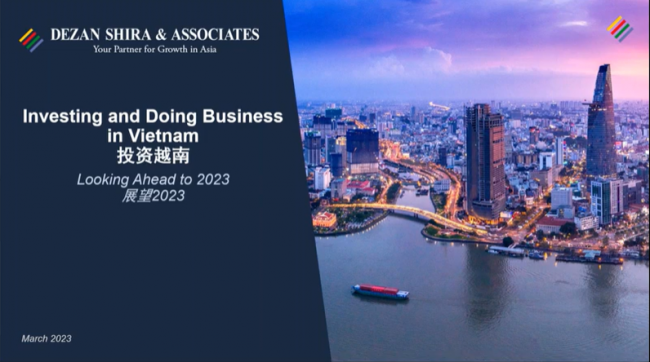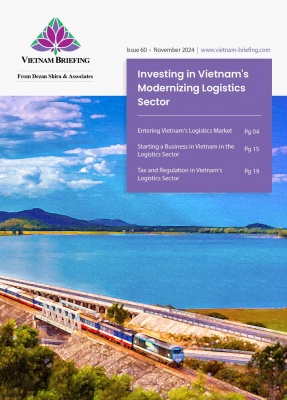HCMC Announces Labor and Employment Strategy Through 2025: Key Goals
The Ho Chi Minh City (HCMC) labor and employment strategy for 2023-2025, with a vision to 2030, has identified eight areas for human resource development, highlighting key priority skill development roles and anticipated technology disruptors that may attract foreign investors in the education and skills development sector.
On June 12, 2024, the Ho Chi Minh City (HCMC) People’s Committee unveiled a labor and employment strategy for the 2023-2025 period, with a vision to 2030. The scheme aims to tackle the city’s decelerating labor productivity growth by revolving around the twin pillars of “green” and “digital.”
The committee sees the labor and employment strategy as a sustainable and fundamental solution for Ho Chi Minh City and expects it to initiate an overhaul of the city’s labor market, leaving a further impact on the regional and national labor markets.
Taking into account the global labor market’s trend, the committee acknowledges that HCMC’s labor market must align with the global trends of green and digital transitions, as these are the core values of Vietnam’s economy.
HCMC targets bolstering labor productivity growth
In line with the two pillars mentioned above, the city prioritizes promoting high-tech and digital sectors and becoming a leading regional service center. To achieve the goals, HCMC’s strategy advocates for planning concentrated high-tech industrial parks and investments in strategic fields, such as robotics, biotechnology, and specialized medical services.
A stronger labor market with high-quality and skilled talents is expected to better support the establishment and development of smart cities, satellite cities, and green cities.
However, the city’s most significant obstacle is the recent stagnation in labor productivity improvement.
According to HCMC’s labor and employment strategy, the city’s labor productivity increased by 4.42 percent per year from 2011 to 2015. The momentum decreased between 2016 to 2020 as the city’s labor productivity dipped slightly to 4.31 percent yearly. The growth slowed even more when the period from 2016 to 2022 was considered, to 4.23 percent yearly.
In comparison, Vietnam’s national average labor productivity growth was 4.53 percent per year from 2011 to 2015, reaching 6.05 percent and 6.71 percent per year during the periods 2016 to 2020 and 2016 to 2022, respectively.
To improve the situation, HCMC’s new labor and employment strategy aims to accelerate labor productivity growth to 7 percent each year. This goal is aligned with the National Program on Increasing Labor Productivity to 2030 (Decision 1305/QD-TTg) – a road map for improving labor productivity in Vietnam.
Among the key targets of the national program, two goals directly influence the determination of HCMC to revamp its workforce, which are:
- A national average labor productivity growth rate of 6.5 percent a year or more; and
- The average labor productivity annual growth rate in the four key economic regions and the five centrally run cities to be greater than the national average between 2023 and 2030. Vietnam’s five centrally run cities are HCMC, Ha Noi, Hai Phong, Da Nang, and Can Tho.
Read more: Vietnam’s National Program for Increasing Labor Productivity: Key Takeaways
Key takeaways from the labor and employment strategy of HCMC
Eight key areas for human resource development
The labor and employment strategy of Ho Chi Minh City for the period 2023-2025 and vision to 2030 identifies eight key areas for human resource development, including:
- Information and communication technology sector;
- Mechanical – automobile sector;
- Mechatronics – automation sector;
- Accounting – finance – banking – corporate administration sector;
- Logistics sector;
- Healthcare sector;
- Tourism sector; and
- Construction – environment – urban planning sector.
Nine technologies influencing future job conversions
The strategy foresees nine technologies that will impact HCMC’s future labor and job transitions. These technologies are believed to encourage the formation of 16 business models and new professions.
The nine major technologies mentioned in the strategy are:
- Mobile internet;
- Cloud computing;
- Big data;
- Artificial intelligence (AI);
- Financial technologies (fintech);
- The Internet of Things (IoT);
- Advanced robotics;
- Additive manufacturing; and
- Semiconductors
E-commerce
The strategy recognizes that the growing significance of social platforms in commercial activities requires the city to reskill and upskill its workforce. Moreover, the e-commerce growth highlights the need for updates in labor and business laws and regulations, as well as training programs in technical skills, soft skills, and legal understanding for both employers and employees.
Green jobs
The labor strategy underscores the city’s workforce’s pressing need for upskilling related to green jobs.
According to the 2023 Green Jobs – Upskilling and Reskilling Vietnam’s Workforce for a Greener Economy report by the World Bank (WB), several Vietnamese government documents define green jobs using output-based and task-based approaches. While the former focuses on whether the final products and services contribute to lessening adverse environmental impacts and/or conserving the environment, the latter pays attention to green tasks that can either be assigned to produce greener outputs or reduce the firm’s environmental footprint.
Per the task-based approach, WB’s experts recognize that green jobs exist in every industry, with potential green occupations accounting for 41 percent of total employment in Vietnam. They also indicate that green jobs demand a higher skill profile, which will necessitate Vietnam’s labor upskilling.
Amid the national efforts to achieve a green transition, HCMC – the center of economic development in Vietnam’s southern key economic zone – is expected to lead by example. The city has been ranked among the top five localities in the country’s 2023 Provincial Green Index (PGI). These facts embolden HCMC’s role and potential in promoting green jobs in Vietnam.
Other objectives
The HCMC labor and employment strategy promotes public-private partnerships in investment, focusing on mobilizing foreign direct investment. This approach aims to generate capital flows and leverage expertise in labor training and retraining, organizational management, and market development.
Furthermore, the strategy lays the groundwork for resolving labor productivity growth, a lower unemployment rate, improved living standards, and business well-being.
Directions for government departments: Why businesses should pay attention
Besides releasing the latest labor and employment strategy, the HCMC People’s Committee also directs relevant departments in implementing the national program on labor productivity improvement to 2030 in the city.
Businesses and investors could refer to these directions to track the local authorities’ efforts for labor productivity improvement.
This month, Phan Van Mai, the committee’s chairman, gave the below instructions:
- The municipal Department of Labor, Invalids, and Social Affairs is assigned to consult the People’s Committee on priority industries and industry groups to promote labor productivity in HCMC.
- The municipal Department of Planning and Investment is assigned to:
- Report annually on the implementation progress and integrate the set labor productivity targets into reports on the city’s socio-economic situation;
- Give suggestions on the public investment allocation for projects based on HCMC’s capital sources and capital balance ability; and
- Provide procedure guidance for receiving the official development assistance sources and non-refundable aid sources that are not under the official development assistance for programs, projects, and non-projects related to the national program on labor productivity improvement to 2030 in the city.
Conclusion
The latest labor and employment strategy is a credible reference for businesses and investors who want to learn about HCMC’s orientation toward improving labor productivity growth. The strategy indicates the government’s focus on preparing its workforce for green and digital jobs as emerging and new technologies transform industries and can create new roles.
About Us
Vietnam Briefing is published by Asia Briefing, a subsidiary of Dezan Shira & Associates. We produce material for foreign investors throughout Asia, including ASEAN, China, and India. For editorial matters, contact us here and for a complimentary subscription to our products, please click here. For assistance with investments into Vietnam, please contact us at vietnam@dezshira.com or visit us at www.dezshira.com.
Dezan Shira & Associates assists foreign investors throughout Asia from offices across the world, including in Hanoi, Ho Chi Minh City, and Da Nang. We also maintain offices or have alliance partners assisting foreign investors in China, Hong Kong SAR, Dubai (UAE), Indonesia, Singapore, Philippines, Malaysia, Thailand, Bangladesh, Italy, Germany, the United States, and Australia.
- Previous Article Vietnam Sets Record for Newly Established Firms in the First Five Months of 2024
- Next Article EU Updates Food Safety Measures for Vietnam Agrifood Exports
































